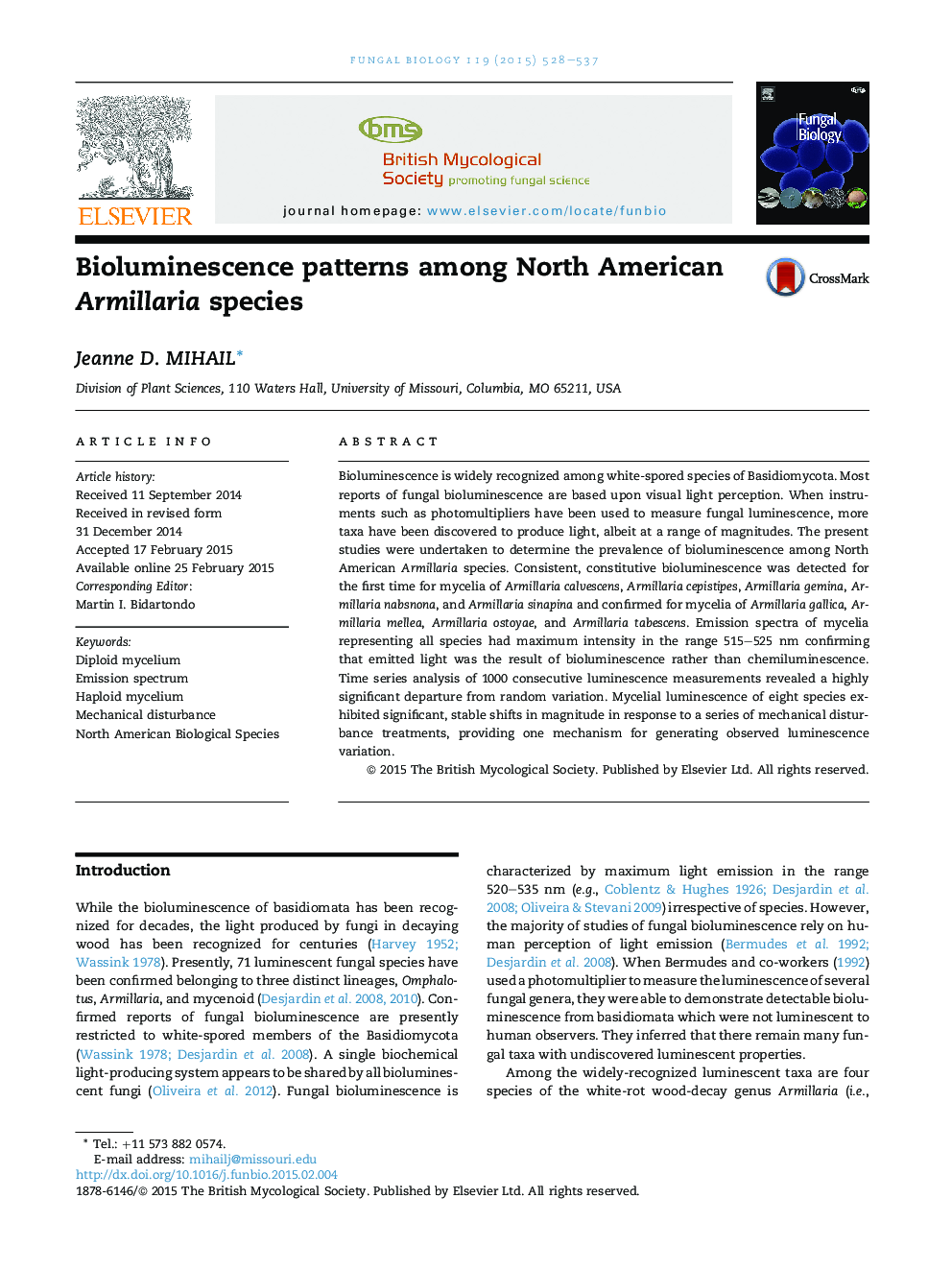| Article ID | Journal | Published Year | Pages | File Type |
|---|---|---|---|---|
| 6287901 | Fungal Biology | 2015 | 10 Pages |
Abstract
Bioluminescence is widely recognized among white-spored species of Basidiomycota. Most reports of fungal bioluminescence are based upon visual light perception. When instruments such as photomultipliers have been used to measure fungal luminescence, more taxa have been discovered to produce light, albeit at a range of magnitudes. The present studies were undertaken to determine the prevalence of bioluminescence among North American Armillaria species. Consistent, constitutive bioluminescence was detected for the first time for mycelia of Armillaria calvescens, Armillaria cepistipes, Armillaria gemina, Armillaria nabsnona, and Armillaria sinapina and confirmed for mycelia of Armillaria gallica, Armillaria mellea, Armillaria ostoyae, and Armillaria tabescens. Emission spectra of mycelia representing all species had maximum intensity in the range 515-525Â nm confirming that emitted light was the result of bioluminescence rather than chemiluminescence. Time series analysis of 1000 consecutive luminescence measurements revealed a highly significant departure from random variation. Mycelial luminescence of eight species exhibited significant, stable shifts in magnitude in response to a series of mechanical disturbance treatments, providing one mechanism for generating observed luminescence variation.
Related Topics
Life Sciences
Agricultural and Biological Sciences
Agricultural and Biological Sciences (General)
Authors
Jeanne D. Mihail,
